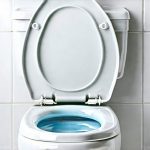Urinary tract infections (UTIs) are frustratingly common, particularly for women. Many associate them with simply needing antibiotics, but preventative measures can significantly reduce their occurrence—and surprisingly, one of the most impactful steps a woman can take is paying attention to her wiping technique after using the toilet. It’s often overlooked as basic hygiene, but how you wipe has a direct relationship with bacterial migration and ultimately, UTI risk. Understanding this connection empowers women to proactively manage their health and reduce the discomfort and disruption UTIs cause.
The female anatomy plays a significant role in UTI susceptibility. The urethra – the tube through which urine exits the body – is shorter in women than in men, providing a quicker pathway for bacteria to reach the bladder. Moreover, its proximity to both the anus (containing a large population of E. coli, the most common UTI-causing bacterium) and the vagina makes it vulnerable. Proper wiping technique isn’t about eliminating all bacteria; it’s about minimizing their transfer from the anal region towards the urethra. This seemingly small act can drastically alter the bacterial landscape around this sensitive area, creating a barrier against infection.
The Front-to-Back Rule: A Cornerstone of Prevention
The fundamental principle in UTI prevention wiping is consistently employing the front-to-back technique. This isn’t merely a suggestion; it’s a cornerstone of hygiene for women. It directly addresses the anatomical risk factors we discussed earlier, minimizing bacterial transfer. Imagine drawing a line from the anus towards the urethra – wiping back to front essentially carries potential pathogens across this boundary. Conversely, moving from the cleaner front area (vagina and urethra) backwards avoids introducing bacteria where it doesn’t belong.
This practice requires conscious effort initially, particularly for those accustomed to different habits. It’s easy to fall into old routines during moments of haste or distraction. Reminding yourself with visual cues – a small note in the bathroom, for instance – can reinforce the correct technique. Consistency is key; even occasional lapses increase the risk of bacterial contamination and potential infection. It’s also important to remember that this isn’t about eradicating all bacteria from the anal region, but rather preventing their migration forward towards the urinary tract.
Consider the impact during menstruation. Increased blood flow and changes in vaginal pH can create a more favorable environment for bacterial growth. During this time, reinforcing the front-to-back wiping technique becomes even more crucial to maintain hygiene and reduce UTI risk. Similarly, after bowel movements – when fecal bacteria are naturally present – diligent adherence to the proper method is paramount.
Beyond Front to Back: Optimizing Your Technique
While direction is critical, optimizing your wiping technique goes beyond simply moving front to back. The gentleness of the wipe matters significantly. Aggressive wiping can irritate the delicate skin around the urethra and vagina, potentially creating micro-abrasions that allow bacteria easier access. Opting for soft, unscented toilet paper is a good starting point. Avoid those with dyes or perfumes which can cause irritation themselves.
Furthermore, consider using multiple wipes if necessary to ensure complete cleanliness. A single wipe may not be sufficient, particularly after bowel movements. Don’t hesitate to use additional wipes until you feel confident that the area is thoroughly cleaned. However, avoid excessive wiping as this increases the risk of irritation.
Finally, think about completeness. Ensure that the entire perineal area—the space between the vagina and anus—is addressed during wiping. This minimizes any residual bacterial presence that could potentially migrate towards the urethra. Consider using a bidet or moistened wipes (unscented!) as alternatives to dry toilet paper for even more thorough cleaning, if they are accessible and comfortable for you.
The Role of Toilet Paper Choice & Alternatives
The type of toilet paper used can significantly impact skin health and UTI prevention efforts. Rough or abrasive toilet paper can cause micro-tears in the delicate perineal skin, creating entry points for bacteria. Prioritize soft, multi-ply toilet paper that is gentle on the skin. Avoid those containing fragrances, dyes, or lotions, as these additives can be irritating to sensitive tissues and disrupt the natural vaginal flora.
Bidet use offers a compelling alternative to traditional wiping, providing a more hygienic cleaning experience. Water effectively removes fecal matter without causing irritation. If a full bidet system isn’t feasible, handheld bidet attachments are readily available and affordable. They attach directly to your existing toilet and provide targeted water cleansing.
Moistened wipes (again, unscented and alcohol-free) can also be used as an adjunct to wiping or as an alternative on occasion. However, it’s vital to choose wipes specifically designed for intimate hygiene and avoid those containing harsh chemicals. Remember that even with moistened wipes, a front-to-back motion is still essential.
Understanding Vaginal Flora & Hygiene Products
The vagina has a naturally occurring ecosystem of bacteria—primarily Lactobacilli—that maintains its pH balance and protects against harmful pathogens. Disrupting this delicate balance can increase UTI risk. Many feminine hygiene products, such as douches, scented washes, and even heavily fragranced toilet paper, can interfere with the natural vaginal flora, creating an environment where harmful bacteria can thrive.
Avoid douching completely. Douching disrupts the healthy bacterial balance, eliminating beneficial bacteria along with potentially harmful ones. This allows opportunistic pathogens to colonize more easily. Similarly, scented soaps and washes should be avoided in the perineal area. Water is generally sufficient for cleaning. If you choose to use a wash, opt for one specifically formulated for intimate hygiene that is pH-balanced and fragrance-free.
Even seemingly innocuous products like feminine pads and tampons can contribute to bacterial growth if not changed frequently. Maintaining good personal hygiene practices—including regular changes of sanitary products—is crucial for preventing UTI recurrence. The key takeaway is to support your natural vaginal flora rather than disrupt it with harsh chemicals or aggressive cleaning methods.
Additional Preventive Measures: A Holistic Approach
While wiping technique forms a foundational preventative measure, it’s just one piece of the puzzle. Hydration plays a vital role in flushing out bacteria from the urinary tract. Aim to drink at least six to eight glasses of water daily. This helps dilute urine and reduces bacterial concentration, making infections less likely.
Urinate promptly when you feel the urge – do not hold it in. Holding urine allows bacteria to multiply within the bladder. Also, empty your bladder completely each time you urinate. Incomplete emptying can leave residual urine, creating a breeding ground for bacteria. Finally, consider wearing cotton underwear and avoiding tight-fitting clothing. Cotton is breathable and helps keep the perineal area dry, reducing bacterial growth. Synthetic fabrics can trap moisture, creating a more favorable environment for infection.
These preventative measures are not about eliminating risk entirely; they’re about minimizing it. UTIs can be caused by various factors, including sexual activity, catheterization, and underlying medical conditions. By adopting a holistic approach that incorporates proper wiping technique alongside these other lifestyle adjustments, women can significantly reduce their susceptibility to these uncomfortable and disruptive infections. For runners and cyclists who may experience increased UTI risk due to friction, explore UTI prevention strategies specific to active lifestyles. Maintaining good hydration is also key; consider tracking fluid intake to ensure you’re adequately hydrated throughout the day. If you are looking for additional preventative measures, exploring whole-plant approaches can offer further support. It’s also important to establish a bathroom schedule to avoid holding urine for extended periods. And remember, if you notice any unusual symptoms, early detection is crucial – early detection matters. Remember this information is not intended as medical advice; always consult with your healthcare provider for personalized guidance on UTI prevention and treatment.





















